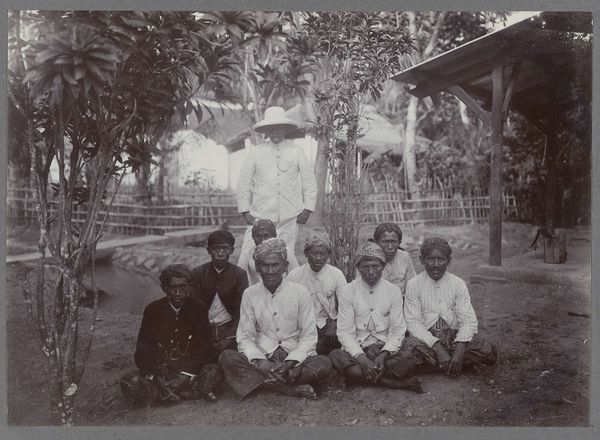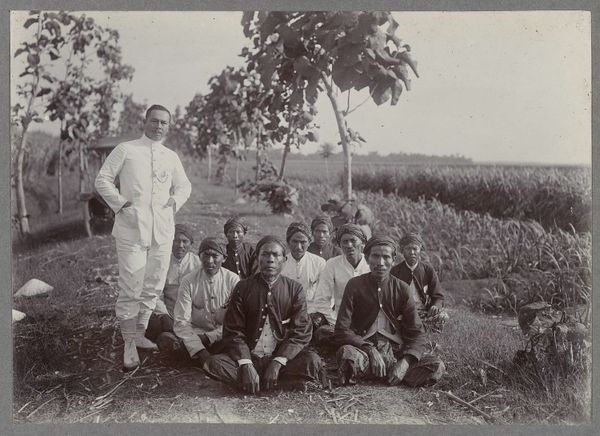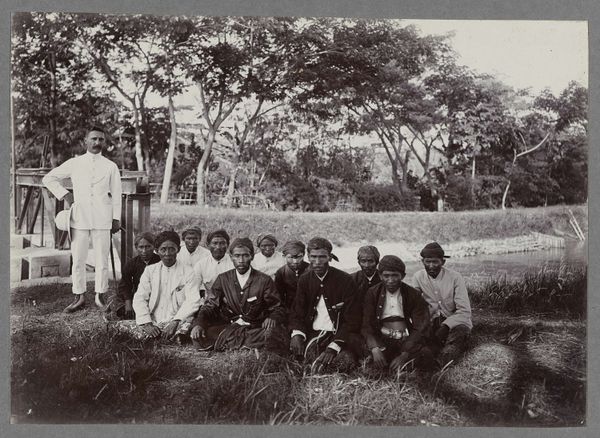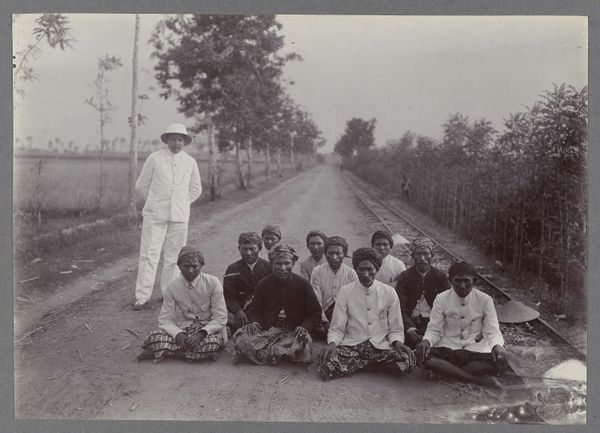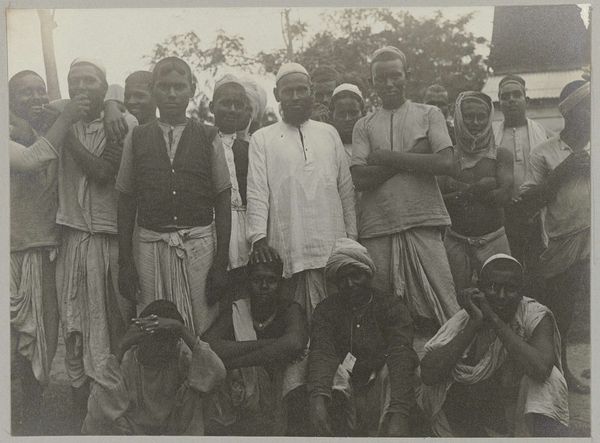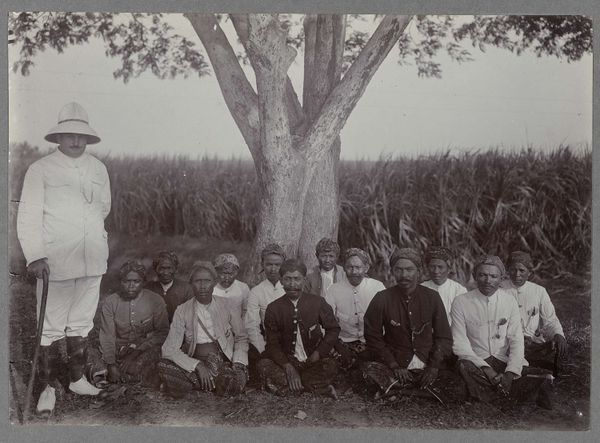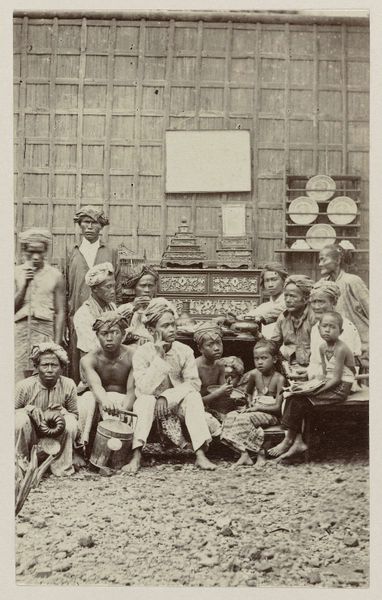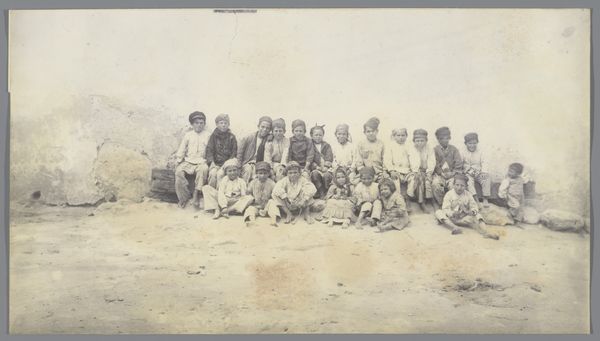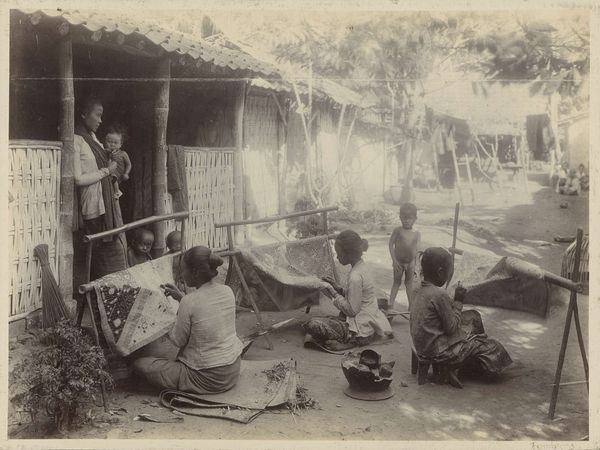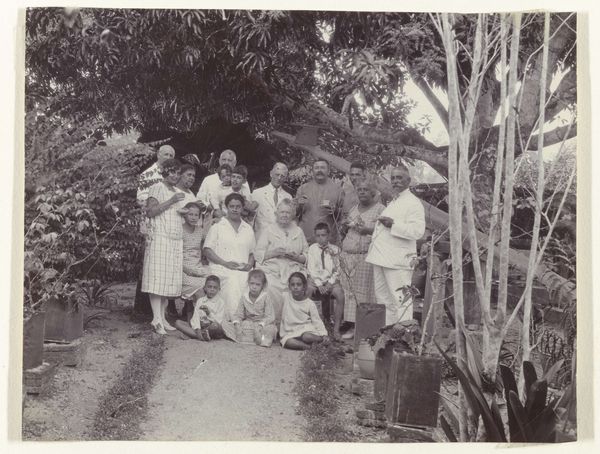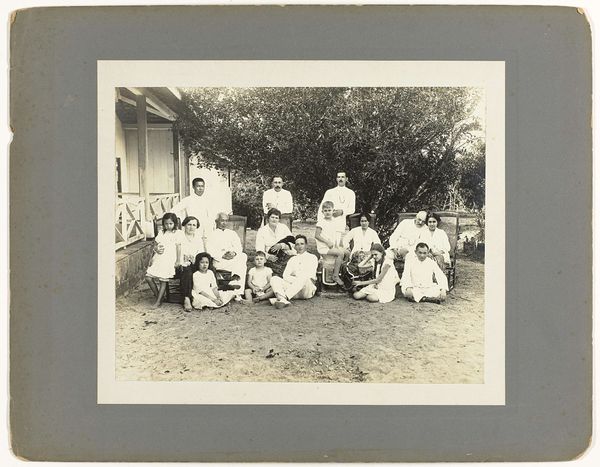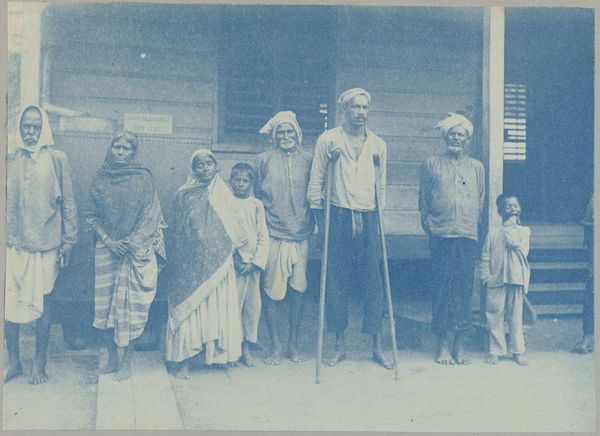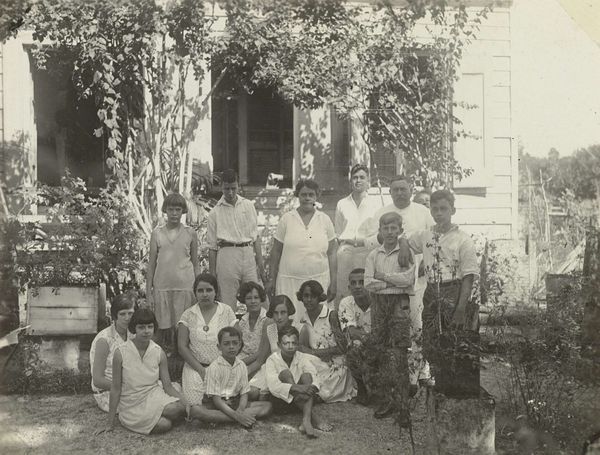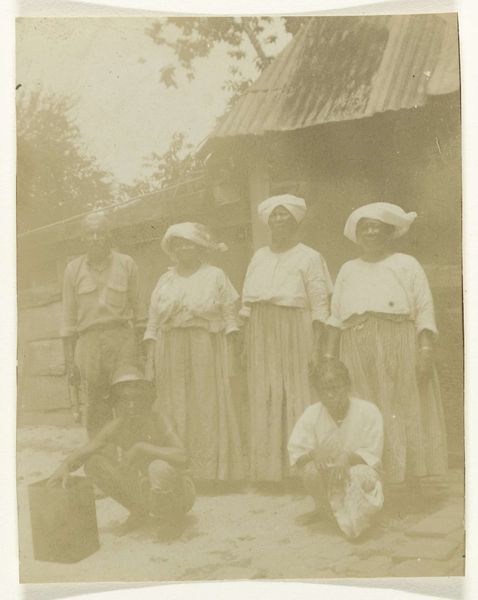
photography
#
portrait
#
print photography
#
photography
#
group-portraits
Dimensions: height 123 mm, width 173 mm
Copyright: Rijks Museum: Open Domain
Editor: This photograph, titled "Opzichter met werknemers" which translates to "Supervisor with employees," was created sometime between 1900 and 1910, its author unknown, and now residing at the Rijksmuseum. It's a compelling group portrait; a single man in a light-colored suit stands behind a seated group of workers in what looks like a field. What do you see in this piece, considering its historical context? Curator: This image is incredibly evocative. We're presented with what appears to be a supervisor, perhaps of European descent given the suit, positioned over a group of Javanese workers. The photograph is more than just a record; it's a document of a specific power dynamic during a period of intense colonial activity in the Dutch East Indies. The composition alone tells a story: the supervisor standing, separated and above, while the workers are seated on the ground, creating an implied hierarchy. Editor: It does seem to immediately create that sense of 'us' and 'them'. How might the setting – the field – play into this dynamic? Curator: The agricultural setting is essential. This suggests that the workers were employed in some form of resource extraction or plantation agriculture, both of which were deeply connected to colonial exploitation. The 'native' populations become labor; it also gives a face and perhaps individual stories to populations. Think of the visual politics at play: this image, reproduced and circulated, reinforced the social and political norms of colonial society. Do you see something like an innocent photo or deliberate propaganda here? Editor: Probably both. It shows individuals, which pushes back against simple stereotyping, yet still sets up this division and implicit hierarchy. Thanks; that helps put the photo into a much wider social frame. Curator: Exactly, seeing photography like this allows us to trace how power was enacted and normalized.
Comments
No comments
Be the first to comment and join the conversation on the ultimate creative platform.
